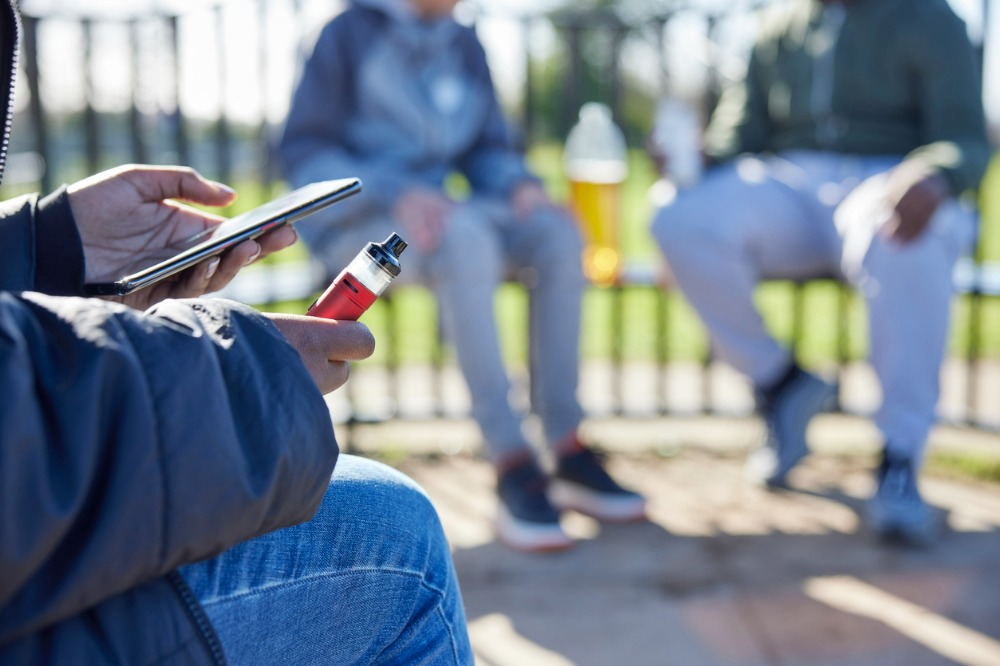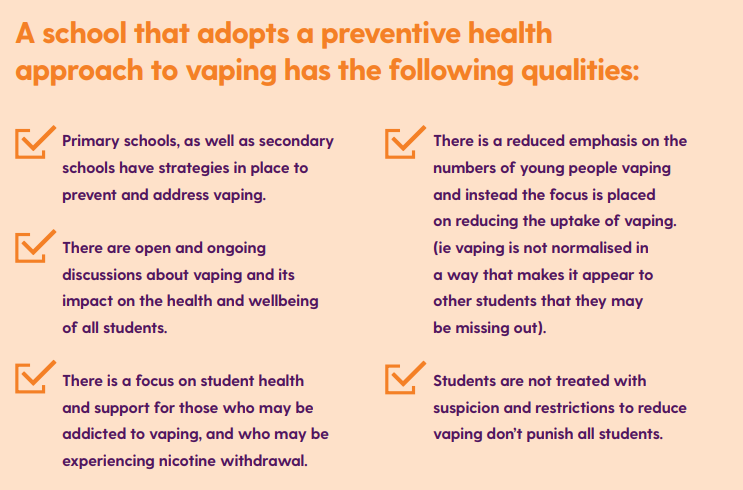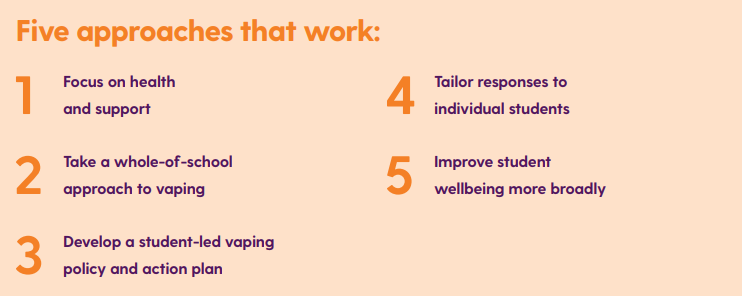
In 2022, Helen Connolly, South Australia’s Commissioner for Children and Young People undertook a survey of 950 young people aged 13-19 years about their knowledge of and exposure to vaping. In her recent guide for educators – Responding to vaping at school: approaches that work – the Commissioner outlines anti-vaping approaches schools can adopt that are most likely to work.
Although the laws around vapes and vaping are evolving, one thing remains unchanged – Australia has never legalised selling of any kind of vape to any person under 18 years of age. But knowing this, we also know young people can access vapes easily, with many reporting they’re able to buy or get them from friends.
While vapes can be easy to get, they can be difficult to quit, which is why schools have a role to play in preventing their uptake, and in managing addiction and associated behaviours related to vaping as seen in their students.
Schools need to take a whole-of-school preventive health approach to addressing vaping. This includes applying approaches that will discourage students from taking vaping up, but also providing guidance and support for those already vaping.

Along with a preventive health approach, schools need to establish clear expectations around vaping that include the consequences students will face if caught vaping, or supplying or selling vapes to minors.
A school that adopts a preventive health approach is comfortable having open and ongoing discussions about vaping and its impact on the health and wellbeing of all students. They place a focus on student health, providing support for students who are already addicted to vaping and who therefore may be experiencing nicotine withdrawal.
They don’t emphasise the numbers of young people who are vaping, because they know this risks normalising the activity in a way that can make it appear other students may be missing out. Neither do they treat all students with suspicion, or place restrictions that impact all students. They individualise their responses by supporting students to manage their addiction in ways they hope will lead to them giving vaping up.
In fact, schools that apply a preventive health approach don’t take actions which are punitive – they don’t threaten students with suspension, exclusion or expulsion, and they don’t search school bags or lockers. Neither do they restrict access to school toilets or spend precious school funds on installing (costly) vape detectors.
That’s because they know that use of punitive approaches on school students is unlikely to work. They can have unintended consequences and risk increasing student disengagement, as well as erode trust between students and teachers.
Australian research experts highlight that there is no evidence of the effectiveness of punitive measures anywhere. International and domestic research over many years has found that the most successful approaches at minimising or preventing cigarette and vape use are those that take a whole-of-school approach. This includes involving students in action groups focused on policy and school change, offering lessons that include interactive discussions and an exploration of the reasons students try or take up vaping, and consideration of vaping within the context of the social and emotional aspects of the school’s curriculum.
Learning about vaping as part of a school’s broader drug and alcohol strategy is one of the most effective preventive approaches schools can take; ideally this learning is introduced in primary school and extended into secondary school. Learning about vaping should be interactive and participatory where students can engage with ideas and test their own knowledge. It also means ensuring their ideas for change are listened to and acted upon.



